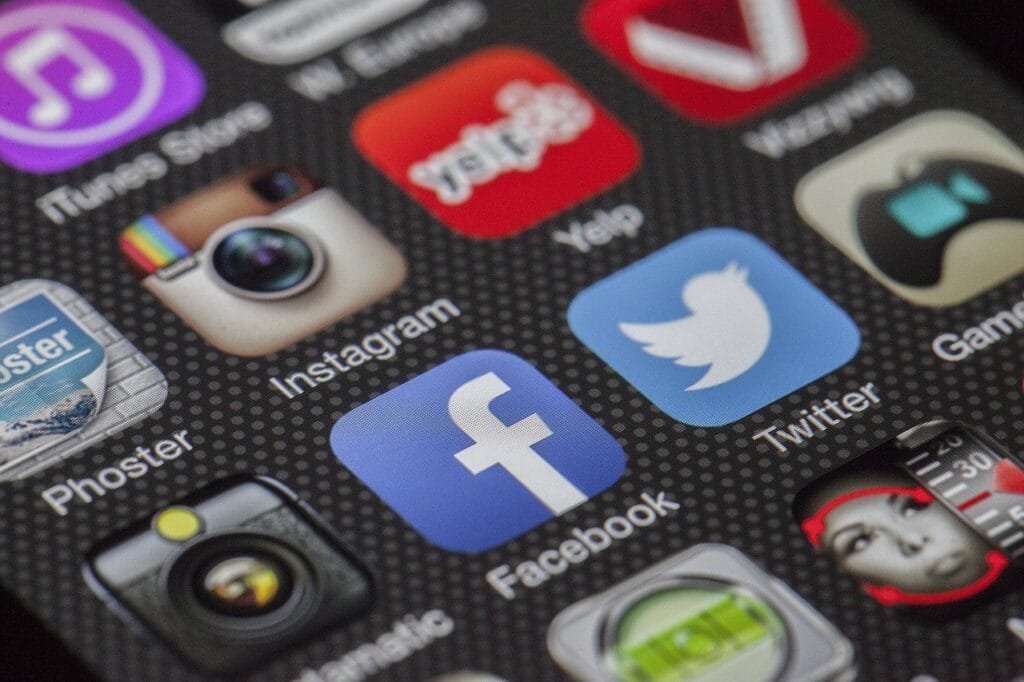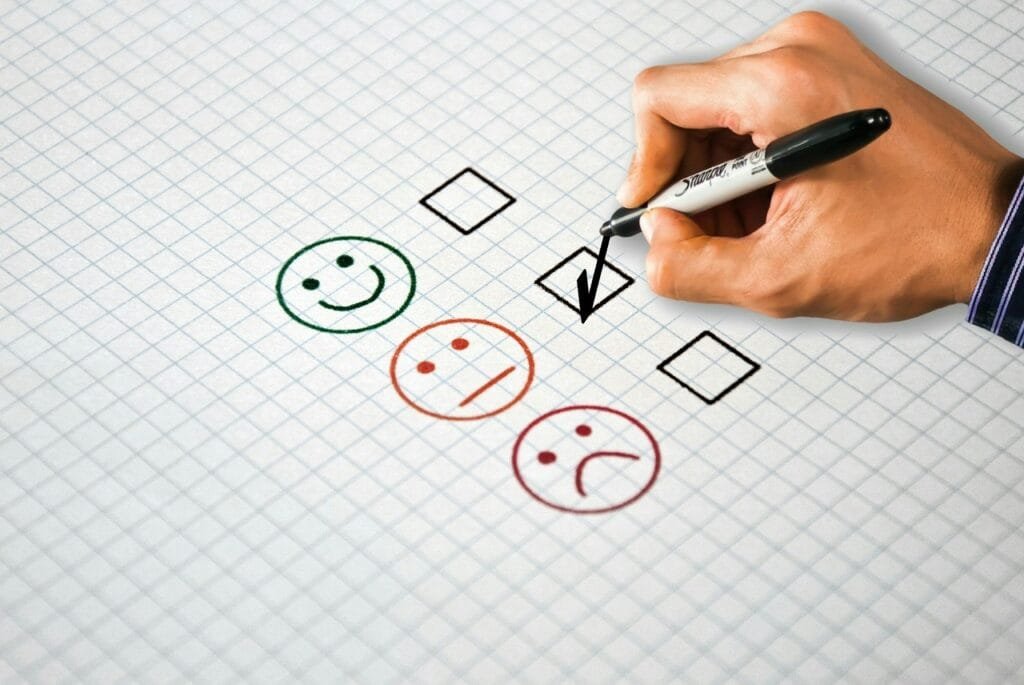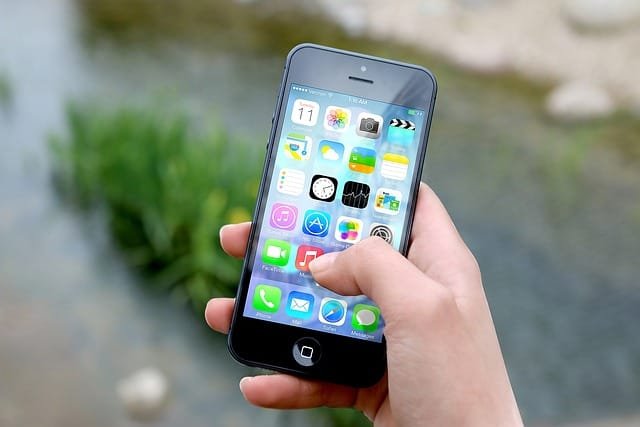Enhancing Customer Experience
Importance of Customer Training
When it comes to business, how you train your team can seriously make or break the customer experience. I’ve seen firsthand how well-trained staff can greet customers like pros, tackle hiccups with grace, and leave lasting positive impressions. Think of it as a secret weapon to turn potential headaches into repeat business and loyalty.
Believe it or not, more than 75% of businesses see smoother product rollouts thanks to good customer education efforts. This leads to happier folks, fewer cries for help, and a brand people actually stick with (Skilljar).
| Benefits of Customer Training | Impact (%) |
|---|---|
| Easier product introduction | 75% |
| More satisfied customers | 60% |
| Fewer need for help | 50% |
| Stronger customer loyalty | 55% |
Lively training sessions with role-playing, quiz competitions, and hands-on practice make learning fun and practical (CXE Inc.). This way, employees are ready for whatever curveball a customer might throw.
Impact of Customer Training Programs
Customer training is like a magic trick that does more than just fix minor issues between customers and staff. It boosts the employees’ skills to handle complaints, suggest products, build connections, and leave memorable impressions. Elevating the customer service experience from just okay to fantastic is a move that pays off big time.
In industries like retail, travel, and hospitality, training employees well can lead to rave-worthy customer experiences. This not only increases customer satisfaction but keeps the business booming.
By focusing on customer experience management, companies can streamline training, ensuring everyone knows how important good service is. Making customer experience training part of the company DNA means it enhances every interaction.
Investing in training isn’t just a checkbox on an operations list; it’s smart strategy that can change how customers see and experience the company. For further insights into the customer journey, why not check out our resources on customer journey mapping and customer experience metrics.
Customer Training Examples
Training is the secret sauce that can really jazz up how customers feel about a company. Here, I’ll give you the lowdown on some top-tier methods and share a few stories from the trenches that show just how game-changing customer training can be.
Leading Industry Practices
A bunch of companies out there are crushing it with their customer training programs, which have proven to boost customer happiness while reducing those pesky support calls. In fact, 75% of businesses say they see way better product onboarding when they nail customer training, leading to a bunch of happy campers on both sides (Skilljar). The beauty is that training comes in all shapes and sizes—from do-it-yourself resources to shindigs with live demonstrations—catering to all sorts of customer preferences.
| Company | Training Approach | Key Benefits |
|---|---|---|
| Offers training in 13 languages; live events and self-service training across Talent, Sales, and Marketing lines. | Breaks the language barrier and offers a buffet of learning styles. | |
| Zendesk | Free and paid programs with custom learning paths for various roles. | Personalizes learning experiences for unique needs. |
| Procore | Free training and certification for construction management, with continuing ed credits. | Provides specialized know-how and keeps pros learning. |
| Deloitte Accountancy | Rolled out the ClientFit program to coach through customer stages. | Bagged more qualified leads and made clients stick around longer. |
The takeaway? These strategies beef up satisfaction and secure the company’s growth, making sure customers can truly rock with their products or services.
Case Studies in Customer Training
Diving into real cases gives you a front-row seat to see how customer training works wonders. For example, Zendesk’s training lets users pick content that clicks with their roles, syncing up what customers want and what the company delivers for a sweet user experience (Skilljar).
Procore’s free training and certifying for folks in the construction biz makes them pros on their platform, proving that better training means folks can really get around on their software (Skilljar).
And then there’s Deloitte’s accountancy division, showing us that teaching customers the ropes can bring solid results—like a 50% jump in solid leads and 25% more clients hanging around once they kicked off their training (Totara).
Pouring into customer experience training and picking up the best practices lifts the whole customer ride, delivering service that might make a waiter at a five-star restaurant jealous. For anyone looking to up their game, there are guides like customer journey mapping and customer experience metrics to help light the path.
Technology in Customer Experience
Alright, let’s chat about how tech ain’t just cool gadgets but also a game-changer in making customers happy. I’m here to dive into how jazzing up customer interactions with AI and machine learning can really pump up satisfaction. Oh, and don’t get me started on the wild world of augmented reality (AR) – it’s like magic for businesses!
AI and Machine Learning Makeover
AI and machine learning are the secret sauce for upping the customer game. Imagine scanning through mountains of data faster than a speeding bullet and picking out patterns like a pro. Companies like Amazon have nailed it—using AI for those “just-might-like-this” product nudges not only makes you feel special but keeps you coming back, spending more. That’s a win-win!
No more waiting on hold forever—with AI chatbots, it’s like having a coffee buddy ready to chat 24/7. They’re there, keeping things smooth, answering questions, solving issues faster than you can say “customer support.” Plus, the insights AI picks up can spot where you’re jammed up on this customer journey road trip and helps businesses make everything go like a breeze.
Here’s a little cheat sheet to show you how AI and machines are changing the scene:
| Company | What They Use | What Happens |
|---|---|---|
| Amazon | AI for personal picks | Happy customers and ka-ching sales |
| Starbucks | AI in the app | Quick orders, loyal fans |
Augmented Reality Adventures
Now, let me take you on this AR adventure—it’s like putting on a magic pair of glasses! Sephora’s Virtual Artist app is like having a glam squad in your pocket; try on all the makeup before you buy it. Fun, right? People love this try-before-you-buy stuff—it’s engaging, boosts shopping happiness, and keeps return rates low. More “yes” and less “nah,” if you get what I mean.
AR gives you a sneak peek into how things will look in real life, making sure there’s less buyer’s remorse. It’s like having a personal stylist or home decorator with you, anytime. Seriously, it’s transforming how we see stuff, lining up super well with personalization strategies.
As the tech world keeps spinning, tossing AI and AR into the customer experience mix is the way to go. They make things fun, keep us loyal, and let us enjoy the whole ride instead of just the destination. So if you’re all about making people happy and loyal, these shiny tech tricks should be in your toolbox.
Strategies for Exceptional CX
When it comes to crafting an amazing customer experience (CX), I lean heavily on two key strategies: making things personal and using insights from data.
Personalization and Customization
These days, personal touch isn’t just a nice-to-have—it’s a must-do. People expect you to know what they want and serve it up on a silver platter. Starbucks, for example, nails this by letting folks customize orders via their app, even rewarding them while they’re at it. This keeps customers happy and keeps them coming back for more (AskNicely).
To get personalization right, businesses should use tech to map the customer journey and peek into customer experience touchpoints. Doing so ensures that every chat or click feels intentional and suited just for them. When you focus on personalized customer experiences, you see better engagement and sales.
| Personalization Actions | Perks |
|---|---|
| Knowing customer likes | Customers leave smiling |
| Smart promotions and messages | Boosts loyalty and interaction |
| Customized product picks | More sales at the register |
Data-Driven Improvements
Data isn’t just numbers—it’s a goldmine for revamping how I approach customer experience. Businesses that dig into this data see customer likes and dislikes, guiding smart moves and growth.
This means grabbing feedback through customer surveys or secret shopper programs. Knowing how people feel about their experience shines a light on how good the service really is and spots areas needing a spruce-up (CXE Inc.). This info fuels improvements in training employees and sharpening customer service steps.
Plus, diving into customer experience analytics lets businesses see how they stack up against their goals and nudge their strategies to fit what’s happening now. This naked-eye view is vital to match up with changing customer wants.
| Data Gathering Techniques | Metrics to Watch |
|---|---|
| Feedback through surveys | Net Promoter Score (NPS) |
| Secret shopper feedback | Customer Satisfaction (CSAT) |
| Break down sales patterns | Customer Lifetime Value (CLV) |
Putting effort into customer experience management with a clever use of data keeps businesses tuned in to what folks want, paving the way for unforgettable customer experiences.
Employee Training for CX
Link Between Employee Training and CX
I know investing in employee training is like planting the seeds for a better customer experience. When I put my money into meaningful programs, I see improvements in customer satisfaction and loyalty. Training has to match what customers want and need. That’s how we make sure our service is top-notch (KNOLSKAPE).
| Impact Aspect | Description |
|---|---|
| Customer Satisfaction | Employees who know their stuff can tackle customer needs without breaking a sweat. |
| Customer Loyalty | Happy customers keep coming back for more. |
| Employee Confidence | Knowledgeable employees aren’t second-guessing themselves when talking to customers. |
Agile Training Practices
Agile principles are all about keeping things fresh. They help me tweak training content, so it’s always relevant. With Agile, I can keep up with what customers are asking for, and it keeps the learning cycle going. It’s all about keeping the customer at the heart of everything (KNOLSKAPE).
Getting everyone involved, like pulling in folks from different departments for Agile training, covers all bases and encourages teamwork. It’s much better than keeping everyone in their little silos. Talking and sharing ideas in these training meet-ups turns everyone into a customer service pro.
Tech is my secret weapon in making these trainings stick. Using tools like Learning Management Systems, Virtual Reality, and Mobile Learning keeps things lively and engaging. It also makes it easier for employees to learn on-the-go (KNOLSKAPE). By taking on these tactics, I’m not just improving customer experiences—I’m setting the stage for my team to smash customer expectations.
Measuring CX Success
Figuring out if our customer experience (CX) efforts are hitting the mark isn’t just for kicks—it’s what helps us keep things fresh and fabulous. By diving into the numbers—those fancy KPIs and satisfaction scores—we get a peek into how we’re doing and what needs a little TLC.
Key Performance Indicators
Alright, KPIs are like the report cards of our CX strategies, showing us who’s scoring A’s and where we’re bombing. Here are some big players:
| KPI | Description |
|---|---|
| Net Promoter Score (NPS) | This bad boy checks if customers love us enough to chat us up to their pals. A simple question uncovers if we’re making folks happy. (SuperOffice) |
| Customer Satisfaction Score (CSAT) | This tells us how people feel about particular meet-ups with us. They rate experiences so we know what’s rocking and what’s shocking. |
| Customer Lifetime Value (CLV) | Think of this as measuring how much cashola a customer brings over the years. A bigger number means they’re sticking around and we’re doing something right. |
When we crack open these KPIs, we see where we shine and where we stumble. Companies nailing CX are lapping the competition, not just holding on to customers but squeezing extra juice from them too. (AskNicely)
Customer Satisfaction Metrics
KPIs are crucial, but now let’s chat about some metrics that get to the heart of how customers are feeling about us:
| Metric | Purpose |
|---|---|
| NPS | It’s like the loyalty heart-check, seeing if folks are singing our praises. |
| CSAT | Gauges how customers are vibing after chats or dealings with us. |
| Customer Effort Score (CES) | Checks how smooth or bumpy the ride was. If it’s easy peasy, we’re golden. |
Mix these metrics with a killer customer path, and we’re golden at every stop on the CX journey. Getting the scoop and tweaking every step in the customer’s adventure is what pumps up the experience game. (Renascence)
With my eyes on these indicators like a hawk, I’m constantly tweaking our mojo to up customer good vibes. Companies that throw their weight behind CX are the winners here—they see dollars stacking up, even as much as a 70% boost (SuperOffice).
Company Culture and CX
Building a strong link between company vibes and how customers feel when interacting with us is pretty much what makes the whole thing work. When the folks behind the scenes genuinely care about the people they serve, everyone ends up happier.
Creating a Customer-Centric Culture
Putting customers at the heart of what’s going on means thinking about what they want and need at every level. Anyone who deals with customers needs to know they’re not just flipping widgets; it’s about making experiences memorable. Take Starbucks for instance, with their clever app and loyalty perks that make everyone feel special and save time (AskNicely). Pulling this off requires leaders to back their team, training that actually sticks, and really listening when customers say something.
To see if it’s working, keeping an eye on these key yardsticks is useful:
| KPI | What It Is |
|---|---|
| Customer Satisfaction Score (CSAT) | How happy folks are with what they got. |
| Net Promoter Score (NPS) | Are customers telling their pals about us? |
| Customer Retention Rate | How many stay with us over time. |
Using these numbers can help keep everyone aimed at the same goal—giving a better customer experience.
Aligning Incentives
Having team rewards tied to customer smiles makes a big difference. When everyone sees that going above and beyond pays off, they are more likely to do so. For instance, Southwest Airlines nailed it by making sure their people know taking good care of customers is a top priority. There are stories of staff going out of their way, like chasing down a passenger to return a lost phone (AskNicely). Recognizing those who do great things boosts morale and keeps everyone motivated to work in the customer’s best interests.
Creating an atmosphere where positive customer moments are celebrated inspires others to follow suit. Training sessions that happen regularly can get everyone on the same page. It’s worthwhile for companies to invest in customer experience training to root these values within the squad.
By setting up a customer-friendly mindset and aligning perks with happy customers, businesses can improve how they connect with people and make the entire experience better for everyone involved.
The Evolution of Customer Expectations
While watching how fast customer expectations are changing, it’s obvious that businesses need to keep up with the new digital age. Folks these days are not just tech geeks; they want smooth sailing from start to finish with any brand they interact with. They expect every moment, from their first encounter to the final purchase and beyond, to be personal and engaging.
Adapting to Digital Trends
In this speedy digital era, businesses have to ride the wave with technology to keep up with what folks want. It’s important to use gadgets like AI, machine learning, and augmented reality to create cool experiences that feel just for you. Companies open to these changes can really boost how customers feel, leading to those happy, loyal vibes.
Check out this table that breaks down some tech and what it can do for customer happiness:
| Technology | What It Does for Customer Experience |
|---|---|
| AI & Machine Learning | Suggests things you might like and makes chats more fun |
| Augmented Reality | Lets you see stuff in a cool, new way before you buy it |
| Omnichannel Strategies | Keeps everything smooth no matter how you shop |
When businesses focus on these, they can really click with today’s crowd.
Delivering Seamless Experiences
Making customer experiences smooth as butter is all about knowing the customer journey inside out. Every step, from the first online look-up to the aftersale check-in, helps shape how customers feel about everything. Making these bits better is a must for any business that wants to thrive.
I’ve figured out that using management tools and a bit of automation wizardry can really smooth things out and make service delivery shine. With smart management, every chat with a customer can be pleasant and spot-on, reacting fast to what they like and don’t like.
Plus, making each customer’s experience feel personal is key to really connecting with them. When businesses know what customers dig and tailor their approach, satisfaction soars, making customers come back for more.
By constantly looking for tips and tricks to put customers first while using tech wisely, I’m all in to help build something special that not just meets, but knocks customer expectations out of the park.
Impact of Employee Experience
When it comes to employee experience (EX) and customer experience (CX), they are closely tied together, like peanut butter and jelly. So, let’s dig into how the folks on your team set the stage for customer success at every encounter.
Employees as CX Ambassadors
Think of your employees as the friendly faces of your brand. Their smarts, attitude, and the way they handle situations can make or break how customers feel about your company. Happily engaged and trained team members tend to give top-notch service, and that means more smiles all around. You’re probably wondering why? Well, because when employees are buzzing with contentment, guess what? Your customers catch those vibes, and everyone’s satisfaction sky rockets. This invaluable relationship between EX and CX has been highlighted in KNOLSKAPE.
Thinking about companies like Zappos, it becomes clear. Their magic comes from putting customer service on a pedestal, proving that jazzed-up employees set the stage for repeat customers who wouldn’t dream of going anywhere else. Yes, a committed team is a ticket to a loyal customer’s heart, as praised by AskNicely.
Key Perks of Employees as CX Ambassadors:
| What’s in it | What’s it do for you |
|---|---|
| Better Customer Happiness | Passionate employees dish out service that leaves customers beaming. |
| Steady Brand Loyalty | When your crew shines, folks keep coming back for more. |
| Trusted Word-of-Mouth Buzz | Happy customers turn into your brand’s biggest cheerleaders. |
| Cha-Ching! More Revenue | Stellar CX turns one-time buyers into lifetime fans. |
EX Influence on CX
The workplace vibe your employees roll with can seriously amp up their game in making customers happy. Adopt Agile principles in training, like a wise Jedi, and you’re setting your team up for greatness. These practices keep things fresh and adaptable so employees stay a step ahead of what customers crave.
It’s good practice to keep tabs on how training shapes CX. This not only gets your crew prepped for customer chats but tunes training efforts to match what your people and your patrons need. Armed with the right skills and smarts, your team naturally lifts the customer experience up, up, and away!
How Employee Experience Powers Customer Experience:
| What Impresses? | How it Boosts CX |
|---|---|
| Joyful Employees | Happy team, happy customers. Simple math. |
| Training That Sticks | A well-prepped crew meets customer needs like a pro. |
| A Culture That Cares | Positive vibes pump up employee mojo, which spills over into customer service. |
Companies with stellar CX don’t just see happy faces; they witness juicy boosts in customer loyalty and satisfaction—less grumbling, more love. Focus on making your employees’ experience a win-win, and those customer relationships will hit all the right notes, making everyone a winner.



















